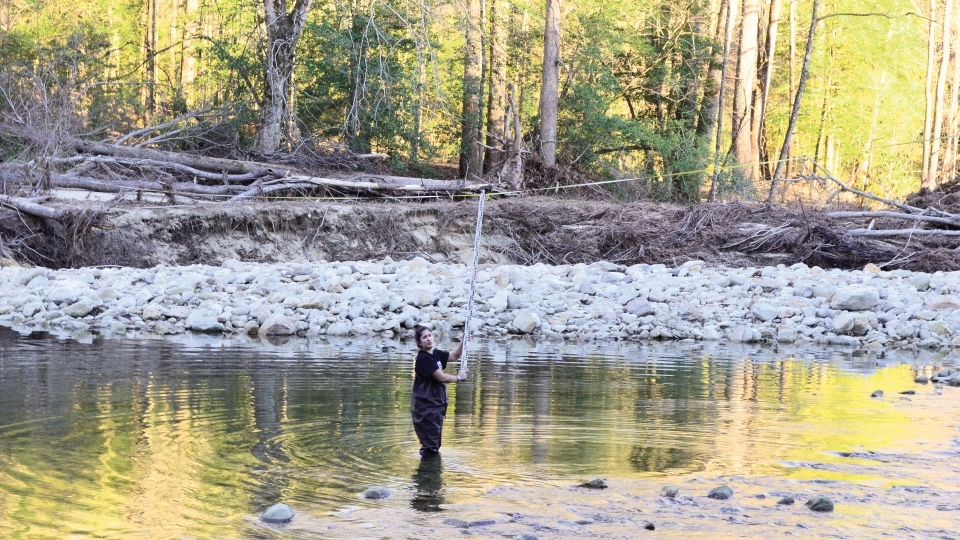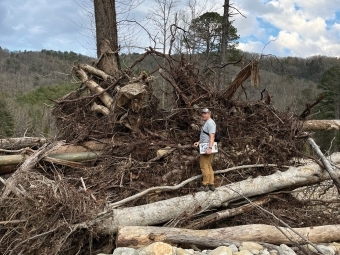On Course Field Work: Students Trace Hurricane Helene's Impact
June 25, 2025
- Author
- Jay Pfeifer

Last fall, as Hurricane Helene flooded western North Carolina, Brad Johnson, an environmental studies professor who studies erosion and landslides, knew he had a once-in-a-lifetime opportunity to connect the material of his geomorphology class to what was happening just a few hours away.
“I basically tossed the syllabus,” he said. He and his students spent the last few weeks of the semester poring over aerial photos of the Appalachian and Blue Ridge Mountains, searching for signs of landslides.
Those urgent weeks in late 2024 motivated Johnson and his students to make another big change — he replaced a planned spring course with “ENV 325” so students could study landslides and floods in the field.
Johnson’s 12 students spent February, March and April Friday afternoons studying Wilson Creek, a river about 90 minutes north of Davidson. They split into six teams and attempted to measure the force of Helene’s impact.
Graham Ponder ’26 and his partner Noah Landau ’25 were drawn to the enormous log jams Helene had created. They spent the semester measuring the logs in the jam — their sizes and orientations — to build an estimate of the size of the debris carried by the raging water.
“This class was such a unique opportunity to see in near real-time what’s happening,” Ponder said.

Professor Brad Johnson studies landslides and erosion. In the wake of Hurricane Helene, which caused widespread landslides and flooding, he is mapping debris flows. The fast moving slurry can travel over a mile, carrying rocks, trees and other hazards.
Anna Farmer ’27 and research partner Susanna Payne ’27 donned waders so they could stretch a measuring tape across the creek, measuring high-water marks. Then, they used a laser and a stadia rod to capture the area of the cross-section of the once-swollen river. That data allowed them to do much more sophisticated analysis back on campus.
“We’re calculating peak water flow velocities in order to calculate peak discharge at points during Helene,” Farmer said. Similar data from each group helps to set a baseline that can be used to better understand what happened during Helene and how the landscape will respond through time.
Both Farmer and Ponder returned to Wilson Creek this summer to continue their research.
This article was originally published in the Spring/Summer 2025 print issue of the Davidson Journal Magazine; for more, please see the Davidson Journal section of our website.



